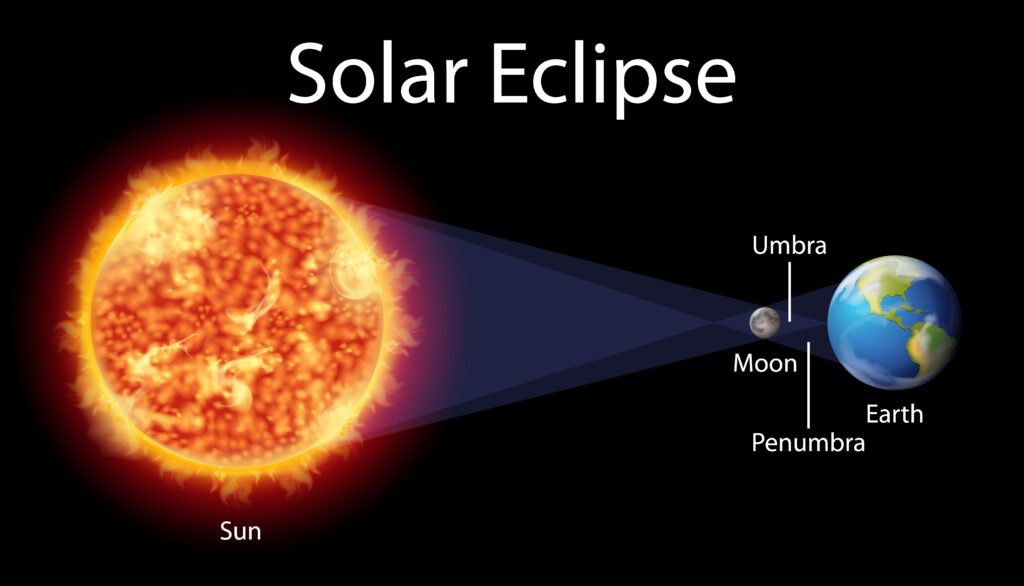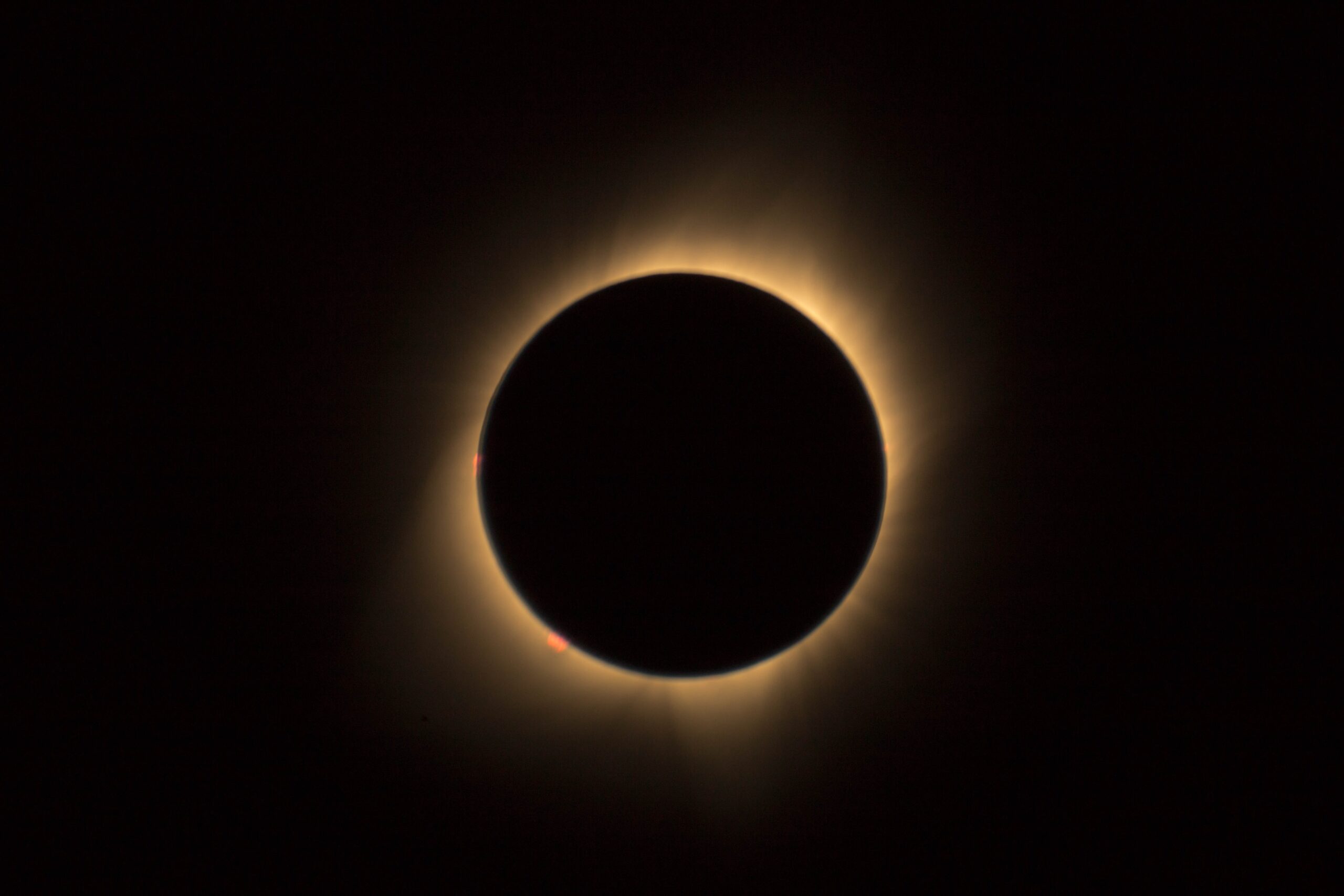A celestial show will dazzle the skies on Saturday, October 14, 2023, as the moon artfully moves across the Earth and the sun, illuminating our globe with its shadow. In the Western United States, Mexico, and portions of Central and South America, spectators will be enthralled with the amazing spectacle known as a solar eclipse 2023, in particular an annular eclipse. The moon will be surrounded by a brilliant halo created by the “Ring of Fire” eclipse, providing a unique and amazing perspective of the universe. We explore the significance of the moment, especially its cultural significance for the Navajo Nation and neighboring Indigenous people, while the globe eagerly awaits this celestial miracle.
Table of Contents
A Glimpse of the Ring of Fire
Despite a typical total solar eclipse, an annular eclipse offers a special visual delight. This phenomenon happens when the moon looks just tad slightly smaller than the sun from its orbital distance from Earth. The effect is a bright band of light that surrounds the moon and is appropriately called the “Ring of Fire.” Even though they happen less frequently than total solar eclipses, partial eclipses are nevertheless amazing and rather uncommon to see.
Read more Train Accident in Raghunathpur, India Leaves Four Dead and 30 Injured
The Path of the Solar Eclipse 2023
This weekend’s solar eclipse 2023 is exceptional as it crosses through the Navajo Nation and the lands of other Indigenous people in the Four Corners region. For these communities, such celestial events hold profound cultural significance. In respect for their traditions, the Navajo Nation, known as the Diné people, will avoid going outdoors, looking directly at the eclipse, or allowing the eclipse’s light to touch them. To honor these customs, several tribal lands, including all Navajo Tribal Parks and the iconic Monument Valley, will temporarily close to visitors on Saturday.


In the United States, the solar eclipse 2023 will grace the skies, weather permitting, in regions of Oregon, California, Idaho, Nevada, Utah, New Mexico, Texas, Colorado, and Arizona, according to NASA’s information. The eclipse’s journey commences in Oregon at 9:13 am Pacific Time and concludes in Texas at 12:03 pm Central Time before proceeding southward over Mexico, Belize, Honduras, Nicaragua, and eventually reaching Brazil.
For those unable to witness the eclipse in person, NASA is planning to provide a live broadcast, ensuring that the event is accessible to all, irrespective of their location.
Have a look at Jada Pinkett Smith Reveals Seven-Year Separation from Will Smith
Finding Your Solar Eclipse 2023 Timing
For those eager to pinpoint the precise timings of the eclipse in their region, NASA’s eclipse website features an interactive tool. Users can enter their exact location and receive accurate details regarding the eclipse’s start and end times.
To summarize, the “Ring of Fire” solar eclipse 2023 is supposed to be an inconceivable regular occasion, a remarkable opportunity for infinite arrangement, and a critical event for Native societies. The universe will continue to astound us with its celestial wonders, so as we get ready to see this celestial marvel, remembering to safeguard the eyes as well as if required, catch the next eclipse in 2024.
Read more Steve Scalise Wins Republican Support for Speaker of the House Role, But Faces Uphill Battle
Understanding Solar Eclipses: FAQs
Why do we have solar eclipses
Solar eclipses occur when the moon passes between the Earth and the sun. Several cosmic conditions must align to produce the characteristic shadow.
1. The new moon: To witness a solar eclipse, the moon must be in its “new moon” phase, with its dark side facing the Earth.
2. Crossing Earth’s orbit: The moon’s orbit doesn’t perfectly align with Earth’s orbit due to its 5-degree tilt. This means that the shadow usually misses Earth during most new moons. For a total eclipse to occur, the moon must be at or near one of its orbital nodes.
3. The moon’s distance to Earth: The moon follows an elliptical orbit around the Earth, with points of closest and farthest approach to the sun. A total eclipse happens when the moon is near its closest point to Earth, while an annular eclipse occurs when it’s farther away.
Is it safe to directly observe the eclipse?
No, even during an eclipse, it is never secure to look straight at the sun. Permanent vision deficits may result from retinal damage caused by the sun’s strong brightness. The light from the crescent sun can be harmful even in partial or annular eclipses. Indirect techniques, including using specially made filters or projecting the eclipse into a screen using a pinhole, are the safest ways to see eclipses.
What if I miss this eclipse?
There’s another chance coming up if the weather doesn’t cooperate or you can’t see this weekend’s annular eclipse. A magnificent picture of the sun’s beautiful corona is expected to be provided by a total solar eclipse that will occur over the Eastern United States on April 8, 2024. It’s an interesting an open door to see the environment of the sun with the independent eye, so make certain to take note of your schedules for this event.


[…] Read more Celestial Marvel Unveiled: ‘Ring of Fire’ Solar Eclipse 2023 Dazzles Western Skies […]